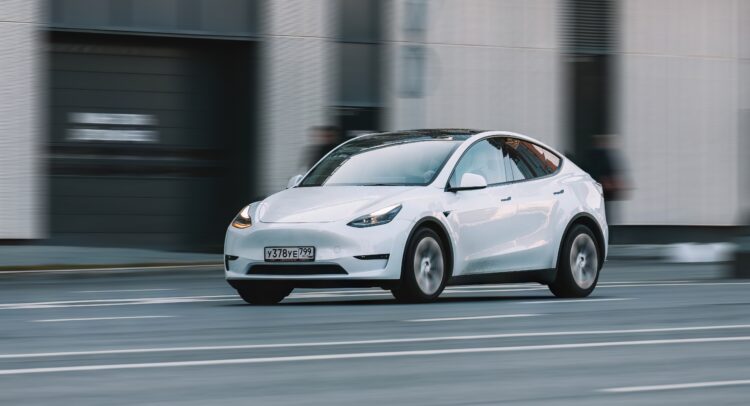Tesla’s (NASDAQ:TSLA) journey in 2024 has been anything but smooth. We’ve got factory shutdowns, shipping woes, and some serious competition nipping at Tesla’s heels, especially in China. Yet, Elon Musk’s unwavering commitment to expanding Tesla’s EV lineup has kept the company on track. The recent release of Tesla’s Q2 production and delivery report has everyone talking. While the numbers show a decline compared to last year, they still managed to beat analysts’ expectations, giving the stock a much-needed boost.
Personally, I am bullish on Tesla stock. While the company faces significant challenges, its ability to beat delivery expectations in a tough environment, coupled with its strong brand and leadership in EV technology, suggests potential for continued growth.
Q2 Delivery and Production Highlights
Tesla managed to produce around 411,000 vehicles in the second quarter, which is impressive considering the challenges the firm has faced recently. Tesla delivered more cars than it produced, with approximately 444,000 vehicles going to customers’ driveways. This marks a 4.8% year-over-year decline in deliveries and a 14% drop in production compared to the same period in 2023.
As expected, the Model 3 and Model Y were the stars of the show, accounting for the lion’s share of production at 386,576 units and deliveries at 422,405 units. The Model S, Model X, and the much-hyped Cybertruck made up the rest, with 24,255 units produced and 21,551 units delivered.
Analysts had expected Tesla to deliver around 439,302 vehicles, so the company’s performance was a welcome surprise. This news sent Tesla’s stock soaring 10% to $231.26 despite being down about 7% for the year.
In just three trading days, from July 1st to July 3rd, Tesla’s stock surged by a jaw-dropping 23%. That’s right, nearly a quarter of the company’s value was added in just 72 hours, and the stock has gone up a bit more in the past few days.
What’s even more impressive is that this surge has completely erased Tesla’s year-to-date losses. The stock is now up 1.8% for the year, a far cry from where it was just two weeks ago.

However, it’s important to note that even with this recent dip, Tesla is still trading at a significant premium compared to other automakers. Its P/E ratio of 64.3x is miles above the likes of General Motors (NYSE:GM) (5.7x) and Ford (NYSE:F) (13.3x), indicating that a lot of growth is already baked into the stock price. The coming quarters will be crucial in determining whether Tesla can maintain this momentum and justify its lofty valuation.
Tesla’s Challenges and Strategic Responses
Tesla is feeling the heat from competition, especially in China. BYD (OTC:BYDDF), their biggest rival, sold around 426,000 pure electric vehicles in Q2, which is just shy of Tesla’s 443,956 deliveries—a gap of only 17,956 units. And it’s not just BYD; other Chinese automakers like Geely (OTC:GELYF) are also stepping up their game, with Geely’s sales jumping 41% in the first half of 2024.
In response, Tesla has been aggressively cutting prices since early 2023, which has helped maintain sales volume but also squeezed profit margins. Its Automotive gross margin dropped to 18.5% in Q1 2024 from 21.1% in Q1 2023. Tesla also faced significant challenges earlier this year, including an arson attack at their German factory and shipping disruptions due to the Red Sea riot, contributing to a 14% year-over-year decline in Q2 production.
Despite these hurdles, Tesla isn’t just playing defense. Elon Musk has plans to accelerate the mass production of affordable EVs, potentially launching in the first half of 2025. This could be a game-changer for reaching a broader market. Additionally, Tesla’s energy storage business is thriving, with Q1 revenue hitting a record $1.64 billion and energy deployments reaching 4.1 GWh.
Tesla is also heavily investing in AI and robotics, nearly doubling their AI training capacity. Musk is so confident in their Optimus humanoid robots that he thinks they could boost Tesla’s market value to $25 trillion (its market cap is currently around $800 billion).
What’s Next for Tesla and Its Investors?
A few key events are coming up that could significantly impact Tesla’s future. First, the Q2 earnings report on July 23rd will give us a detailed look at their financial performance. Analysts expect revenue to reach $23.83 billion. They also predict earnings per share (EPS) of $0.60, with a range of $0.41 to $0.87. This represents a significant improvement from the previous quarter’s EPS of $0.45. If Tesla’s revenue growth turns positive in Q3, it would mark a major recovery milestone.
Then there’s Robotaxi Day on August 8th, which could be a big deal for Tesla’s autonomous driving ambitions. Nonetheless, analysts have mixed views on Tesla’s stock. Dan Ives from Wedbush is optimistic, raising his price target to $300, believing the worst is behind Tesla and that upcoming innovations like the Robotaxi could drive growth.
On the other hand, Colin Langan from Wells Fargo is cautious, recommending selling Tesla shares due to concerns about declining delivery growth and the impact of price cuts on margins. His price target is a conservative $120. Guggenheim analysts also raised their price target to $134 but maintained a Sell rating, noting Tesla’s impressive energy storage deployments as a key factor.
Is Tesla Stock a Buy, According to Analysts?
According to the latest analyst ratings, Tesla stock has a consensus Hold rating. Out of 35 analysts covering the stock, 13 rate it a Buy, 14 a Hold, and eight a Sell. The average TSLA stock price target of $184.41 implies downside potential of around 27.1% from the current price.

The Bottom Line
In conclusion, Tesla’s Q2 delivery report was a mixed bag. While the company beat estimates, deliveries still dropped year-over-year. The market reacted positively, but analysts are divided on the stock’s future. Some believe the worst is over for the company, while others remain cautious about the competitive pressures and potential margin squeezes.
Despite these challenges, I’m bullish on Tesla stock. The company’s resilience, commitment to expanding its EV lineup, and exciting potential in AI and energy storage make it a compelling investment. The upcoming Q2 earnings report on July 23 and Robotaxi Day on August 8 could provide more clarity and potentially drive the stock higher. As always, do your homework and invest wisely.
















